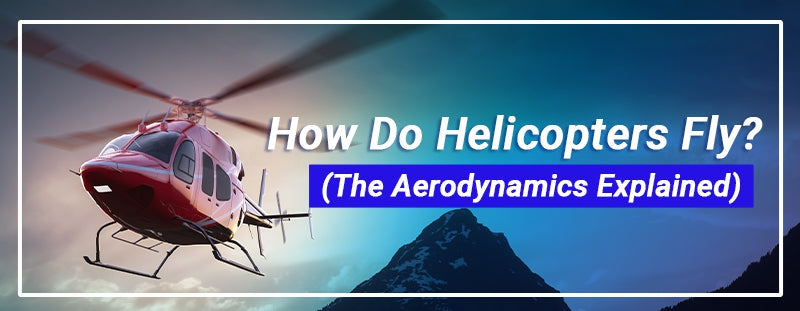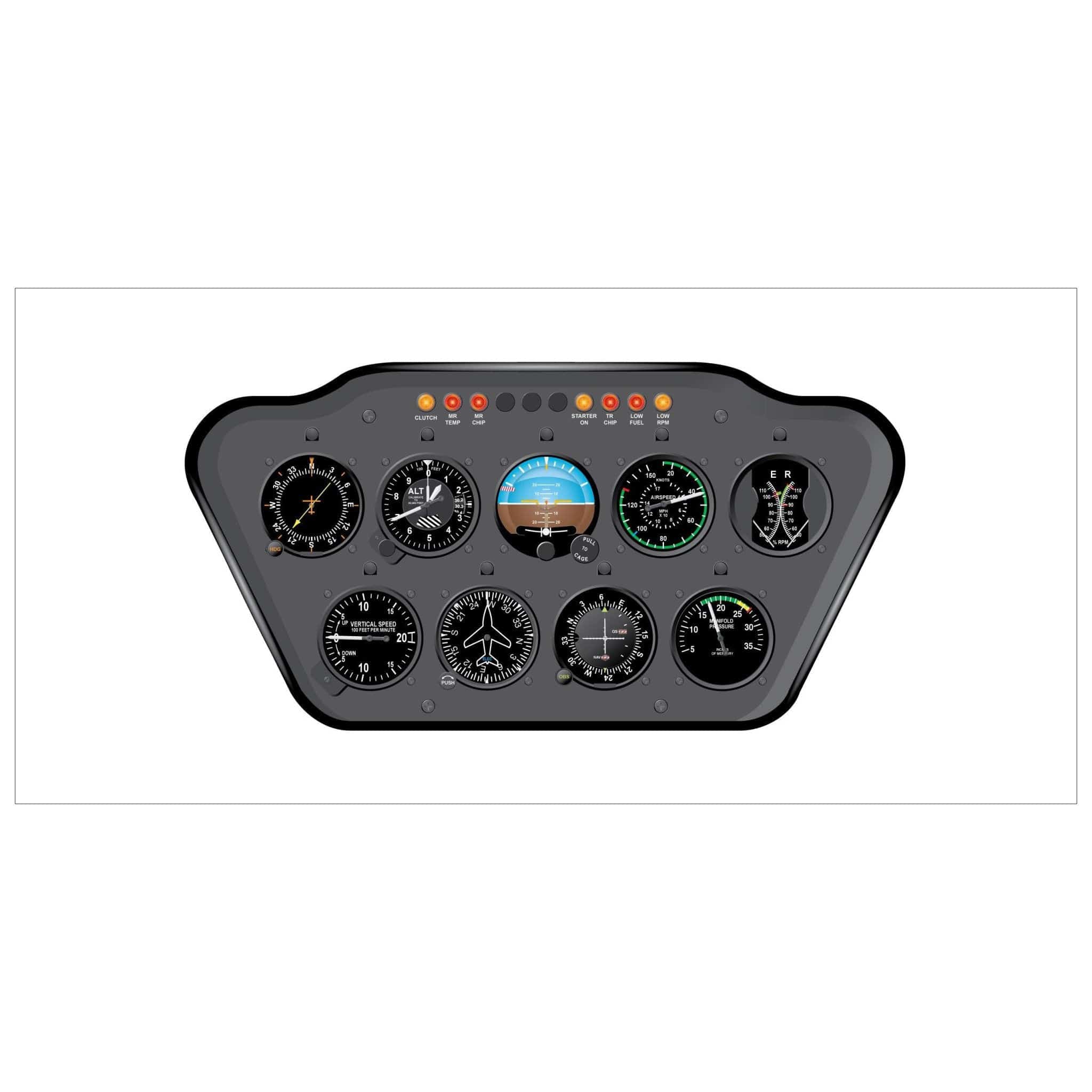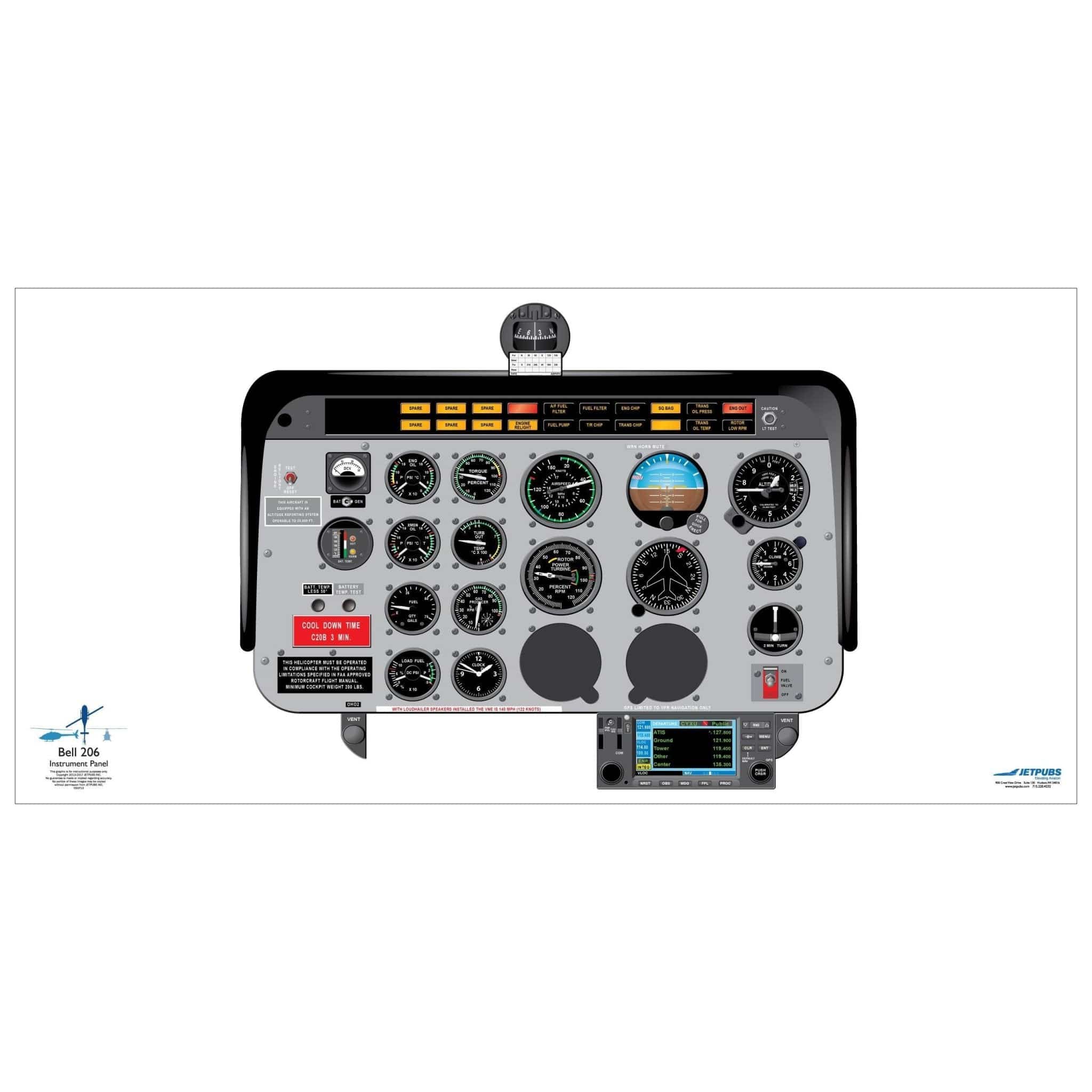
The idea for the helicopter has been around since the 15th-century when Leonardo da Vinci sketched his diagram of an “aerial screw.” Additional theoretical designs were conceived over the following centuries, but first-generation working helicopters weren’t built until the early 1900s around World War I.
These early models were unstable and unreliable. It wasn’t until 1939 that Igor Sikorsky finally produced the first truly functional and practical helicopter—the VS-300.
If designing and producing helicopters was difficult, learning how they fly can also be a challenge. The aerodynamics of fixed wing aircraft make sense. It’s fairly easy to see and understand how a fixed flat, airfoil moving through the air in the direction of travel generates lift.
We can all simulate that simply by putting our hand out the window of a moving car and adjusting the angle of our palm to the ground.
Helicopters are more complex. It’s not nearly as straightforward to visualize how the small narrow, spinning blades of a helicopter generate enough lift to propel the aircraft into the skies, let alone how rotor craft manage straight up and down, left and right, forward and backward movement.
If you’re ready for some learning, stick around, because today we’re demystifying the aerodynamics of helicopter flight. We will also answer some of your most burning helicopter questions.
Let’s jump into it.
 What Forces are Used in a Helicopter?
What Forces are Used in a Helicopter?
We’ll start with the basics. Like fixed wing planes, the three aerodynamic forces that affect helicopters are:
- Lift
- Thrust
- Drag
Thrust and drag are opposing forces while lift is opposed by gravity. Here’s how lift, thrust, and drag are generated by helicopters.
Lift
In a helicopter, lift is generated by the airflow moving across the spinning rotor blades. Fixed wing planes must move down the runway to generate lift, but helicopters generate lift while remaining stationary with their main rotor blades and tail rotor spinning.
Thrust
Fixed wing planes produce thrust directly through their engines. Helicopters, on the other hand, convert lift into thrust when the main rotor tilt alters the lift vector (more on that later).
Drag
As with fixed wing planes, airflow across the body of the helicopter produces drag during flight.
 Helicopter Controls vs Airplane Controls
Helicopter Controls vs Airplane Controls
Helicopters have a throttle like fixed wing planes, along with pedals (though these are used for the tail rotor rather than the rudder), but helicopters have other controls that are different from airplanes. The cyclic and collective controls are unique to rotary aircraft.
 Collective Control
Collective Control
The collective lever on the left side of the pilot controls the pitch of the main rotors. Equal pitch adjustments are made collectively to all blades at the same (hence the name).
The main rotor pitch adjustments are used to move the helicopter vertically up and down. When the pitch is increased, the helicopter climbs. A decrease to main rotor pitch allows the helicopter to descend.
The collective control is linked to the engine power since increased pitch requires increased engine power to maintain rotor speed.

Cyclic Control
The helicopter’s forward, backward, and side to side movements are controlled with the cyclic control stick (a joystick positioned between the pilot’s legs). Like the collective, the cyclic control also adjusts the pitch of the main rotor blades, but instead of simultaneous adjustments, the cyclic control inputs are made to each blade at the same point in its cycle.
 Pedals
Pedals
Rather than controlling the rudder, the foot pedals on a helicopter control the pitch of the tail rotor. The default pitch angle of the tail rotor is set to compensate for the helicopter’s natural right roll tendency.
Pressing the right foot pedal shifts the nose of the helicopter to the right and the tail to the left while pressing the left pedal moves the nose to the left and the tail to the right.
How do Helicopters Take Off?
While fixed wing planes need to taxi down a runway to build up enough speed and lift for takeoff, helicopters generate lift for take off thanks to the airflow moving over their spinning rotor blades while the helicopter sits on the ground.
To take off, helicopter pilots open up the throttle to increase rotor speed. The main rotor blades spin until their rotation has reached a sufficient speed to generate lift.
Once the main rotor is generating lift, the pilot slowly pulls up on the collective to simultaneously change the pitch of all rotor blades.
As the collective input increases rotor torque, the pilot presses the left foot pedal and uses the tail rotor to counter and offset the torque.
When the lift generated by the main rotor exceeds the weight of the helicopter, the craft lifts vertically into the air and transitions into a hover.
Note: The tail rotor of the helicopter is very important for controlled flight. The tail rotor works like a propeller to offset the torque generated by the opposite pull of the engine.
The tail rotor holds the helicopter straight and keeps it from spinning out of control in the opposite direction of the main rotor. It can also be used to rotate and steer the helicopter by generating yawing motion.

Airflow in a Hover
When helicopters are in a stationary hover without wind, the airflow and handling changes depending on how close they are to the ground plus whether they are in or out of ground effect.
If helicopters are hovering within one rotor diameter of the surface, they are in ground effect. In ground effect, the vertical airflow that passes down through the rotors hits the ground and is pushed out. Small wingtip vortices are also generated.
When out of ground effect, the vertical airflow continues straight down. Without the outward movement of the downward airflow, the wingtip vortices are undisturbed and grow larger than they would if you were in ground effect. The bigger wingtip vortices decrease the lift.
From a practical standpoint, this means that helicopters have more lift when they are hovering within ground effect than when they are out of ground effect. As a pilot takes off, they need to use the collective to increase pitch and compensate for the decreased lift, otherwise the aircraft will sink when it moves out of ground effect.
 How do Helicopters Fly?
How do Helicopters Fly?
Once a helicopter takes off, the pilot transitions from a hover to directional flight (forward, backward, and sideways) using cyclic inputs to tilt the rotor. The rotor tilt creates unbalanced lift and therefore thrust.
The cyclic lever is nudged in the intended direction of travel, causing the rotor blades to pitch lower in that direction. The increased angle of attack generates lift in the opposite direction, and the unbalanced lift lets the helicopter move in a lateral direction.
Unique Principles of Helicopter Aerodynamics
If you’ve studied basic aerodynamic forces, you’ll find many of the aerodynamic principles of fixed wing flight also apply to helicopters though rotor craft have some unique principles too.
Dissymmetry of Lift
When a fixed wing plane is in straight and level flight, the airflow is the same across both wings. This equal airflow produces symmetrical lift.
When it comes to helicopter aerodynamics, the blades are spinning in a circle as the aircraft moves forward, and there are advancing blades (moving into the direction of flight) and retreating rotor blades (moving away from the direction of flight).
The advancing blades experience increased airflow and retreating blades have decreased airflow. This unmatched airflow causes a mismatch in lift generation, hence a dissymmetry of lift. Helicopters compensate for dissymmetry of lift using blade flapping designs and cyclic feathering techniques.
 Gyroscopic Precession
Gyroscopic Precession
The effects of gyroscopic precession are caused by rotation, so gyroscopic precession does not apply to fixed wing aircraft. For helicopter pilots, gyroscopic precession means that the effects of any input which is made will take place 90-degrees later.
For example, when a fixed wing pilot makes control inputs to raise the nose of the aircraft, the nose comes up and the wings remain level.
If a helicopter pilot raises the nose while the rotor blade is at the forward position, the increased pitch will be expressed 90-degrees later as an increased pitch on the left side of the aircraft which will cause a right roll.
 Transverse Flow Effect
Transverse Flow Effect
The transverse flow effect is a helicopter-specific phenomenon that occurs when the direction of airflow changes from vertical to horizontal. As a helicopter begins to transition from a stationary hover to forward flight, it experiences a right rolling motion and slight vibrations caused by the transverse flow effect.
At a hover, most of the airflow through the rotors is vertical while during forward flight, most of the airflow is horizontal. This means that as a helicopter goes from a hover to flight, the airflow direction shifts and generates transverse flow.
At 10-20 knots of airspeed, the airflow is more horizontal on the forward half of the rotors and more vertical on the aft half. The front half of the blades have more lift than the aft half.
As we already covered, due to gyroscopic precession, the increased and decreased lift are both expressed 90-degrees after they occur. This means that as pilots transition from a hover to forward flight, they will feel a right roll and need to apply a left cyclic input to compensate.
Effective Translational Lift
As a helicopter moves from a stationary hover to forward flight, it does so by generating translational lift. Effective translational lift occurs when the main rotor system fully outruns the wingtip vortices, and the helicopter is operating in clean air environment.
At this stage the airflow has completed the transition from vertical to horizontal and the small wingtip vortices that are generated occur aft of the rotor system.
Effective translational lift is first generated at speeds of between 16-24 knots. The nose will want to pitch up during the transition to translational lift, and the pilot has to compensate by a forward cyclic control input.
 Difference Between Helicopters vs Airplanes
Difference Between Helicopters vs Airplanes
Planes and helicopters are both common flying machines, but as we shared, they have some key differences.
Here’s a quick overview:
- Thrust is generated by an engine or propeller in an airplane and by the main rotor blade pitch in a helicopter.
- Helicopters have collective and cyclic controls that planes do not.
- Helicopter pilots have more required control inputs to maintain aircraft stability.
- Helicopters can take off and land in tight spaces without runways.
- Helicopters can move laterally and ascend and descend vertically.
- Helicopters can hover in place.
- In the case of engine failure, a fixed wing plane would attempt to glide to a landing while a helicopter would use autorotation to try to land.
 Helicopter FAQs
Helicopter FAQs
Finally, as promised, here are some quick answers to everything you wanted to know about helicopters.
How High do Helicopters Fly?
The highest helicopter flight in the world was 42,000 feet in an AS 350 B2 Squirrel. The Squirrel is an outlier though, since most helicopters fly around the 5,000-foot range and even high-performance rotorcraft usually stay at 10,000 feet.
Helicopters’ maximum-altitudes are lower than fixed wing aircraft because as the air thins, rotor blade pitch needs to be increased to compensate.
There is only so much pitch adjustment that can be made due to blade design, and when pitch can no longer be adjusted, the helicopter can’t generate lift.
How Far can Helicopters Fly?
The longest recorded helicopter flight was a 2,213-mile trip flown in a Hughes YOH-6 Cayuse. The longest-range helicopter currently in flight is the Bell Boeing V-22 Osprey with a range of 2,230 miles.
Unlike fixed wing planes, helicopters aren’t built for extended flights and the average range of a helicopter is closer to 200-800 miles depending on the size and type of helicopter.
How Fast can Helicopters Fly?
The fastest helicopter in the world is the Eurocopter X3 with a top speed of 295 miles per hour (255 knots). By contrast, the fastest military helicopter is the 195 mile per hour (170 knot) Chinook CH-47F.
The Airbus H155 is another fast helicopter for civilians with a top speed of 200 miles per hour (174 knots). The average speed for helicopters ranges from 150 to 200 miles per hour.
You can learn more about helicopters and become a pilot:
If you’re interested in becoming a helicopter pilot or studying more about how helicopters work, we recommend a copy of the ASA Student Pilot Kit. This kit includes a definitive guide that covers flight theory, aerodynamics, systems, performance, maneuvers, emergencies, and more. It is the basis for the FAA knowledge exam and remains an excellent refresher resource and reference manual for certified helicopter pilots.
It’s your turn
Are you a helicopter pilot or student? What was the most challenging part of learning to fly a rotor aircraft versus a fixed wing? Share what you enjoy most about flying helicopters or why you would like to give rotary craft a try if you are currently a fixed wing operator. We would love to hear from you.
Did you find this article helpful?
Do you think we missed anything important or made a mistake? Let us know in the comments below!










